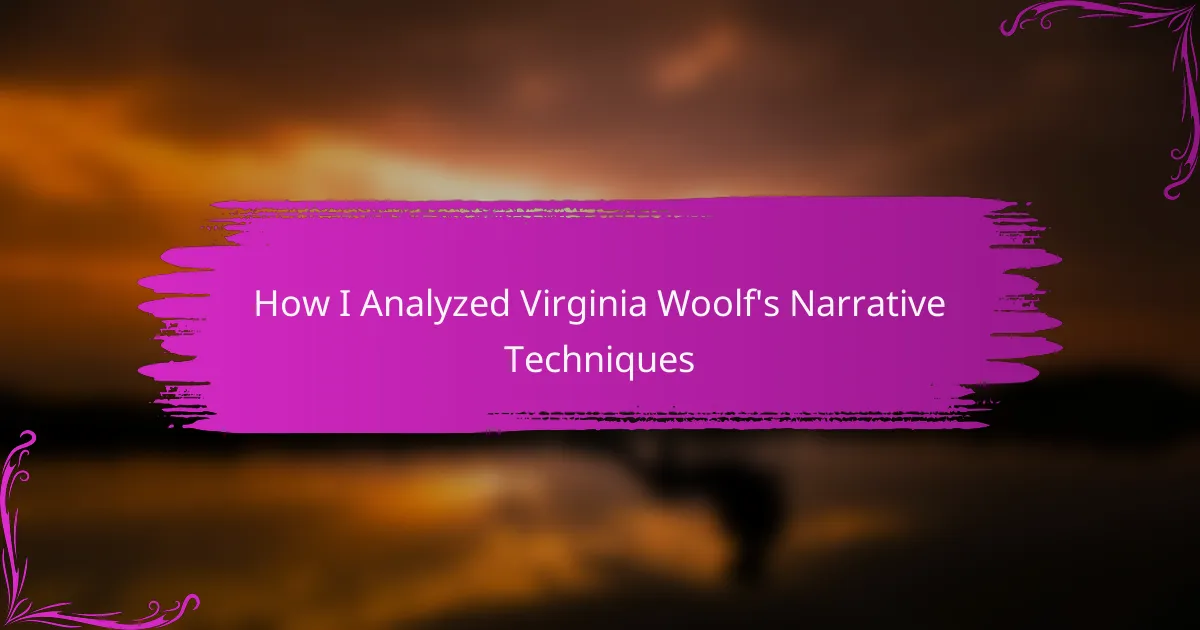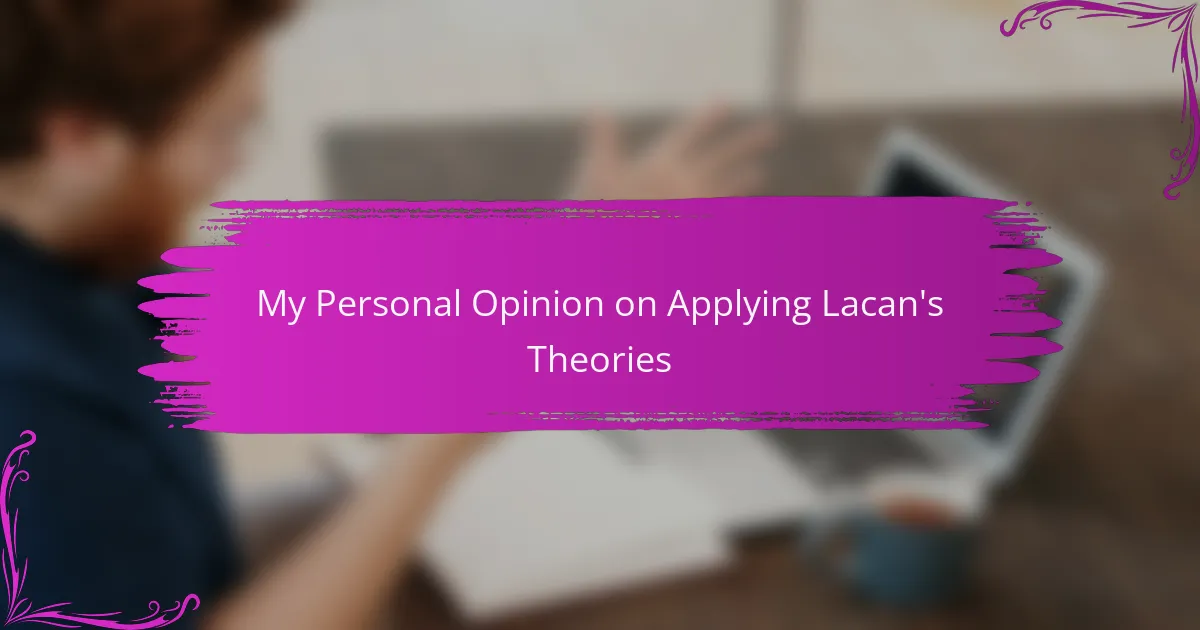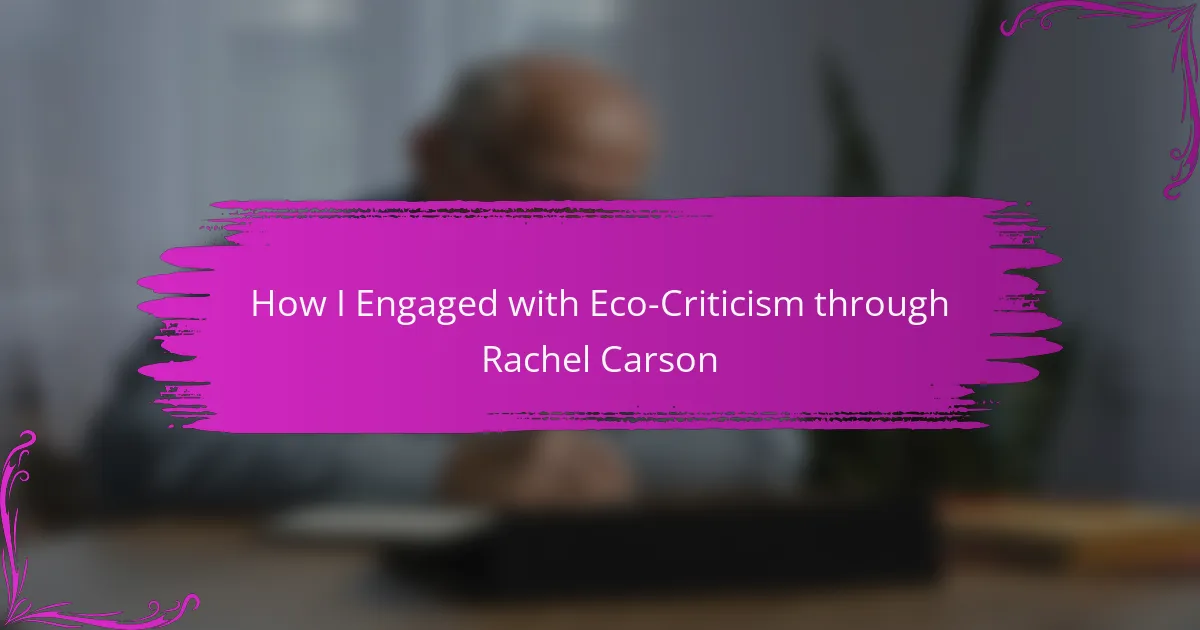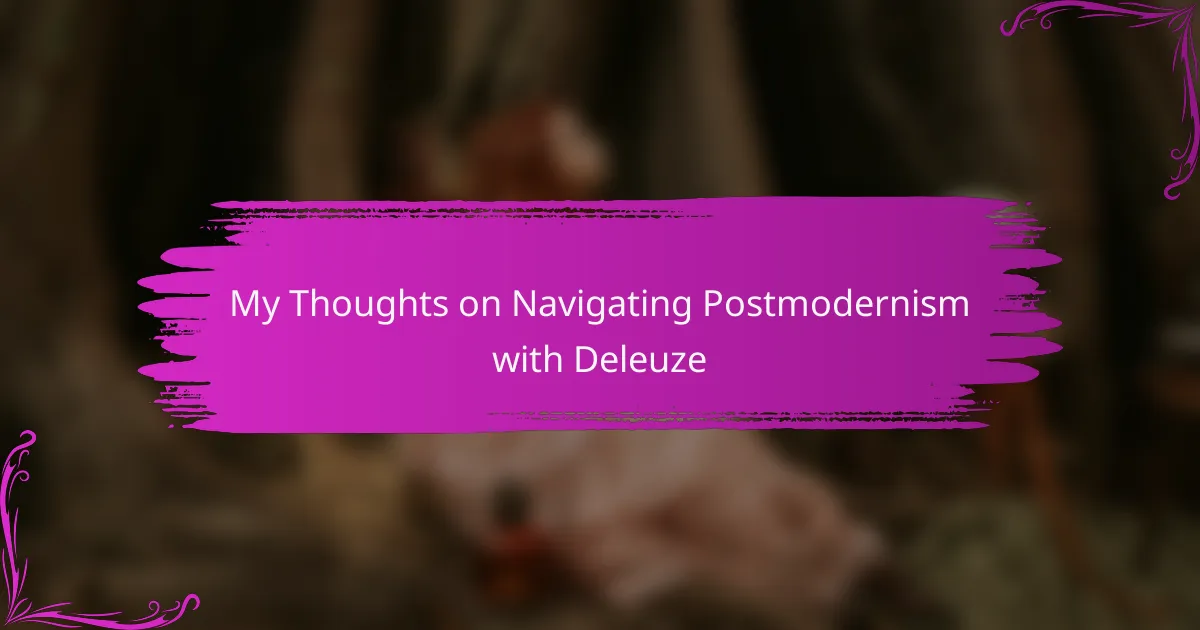Key takeaways
- Virginia Woolf employs innovative narrative techniques, like stream-of-consciousness and non-linear storytelling, to deepen emotional engagement and character exploration.
- The narrative structure and style in her works provoke readers to reflect on their own lives and perceptions, enhancing the connection between literature and personal experience.
- Woolf’s use of vivid imagery and symbolism amplifies themes of time, identity, and human complexity, inviting readers to engage with the text on a profound level.
- Practical analysis methods, such as close reading and thematic exploration, help uncover the intricate layers of meaning within Woolf’s narratives.
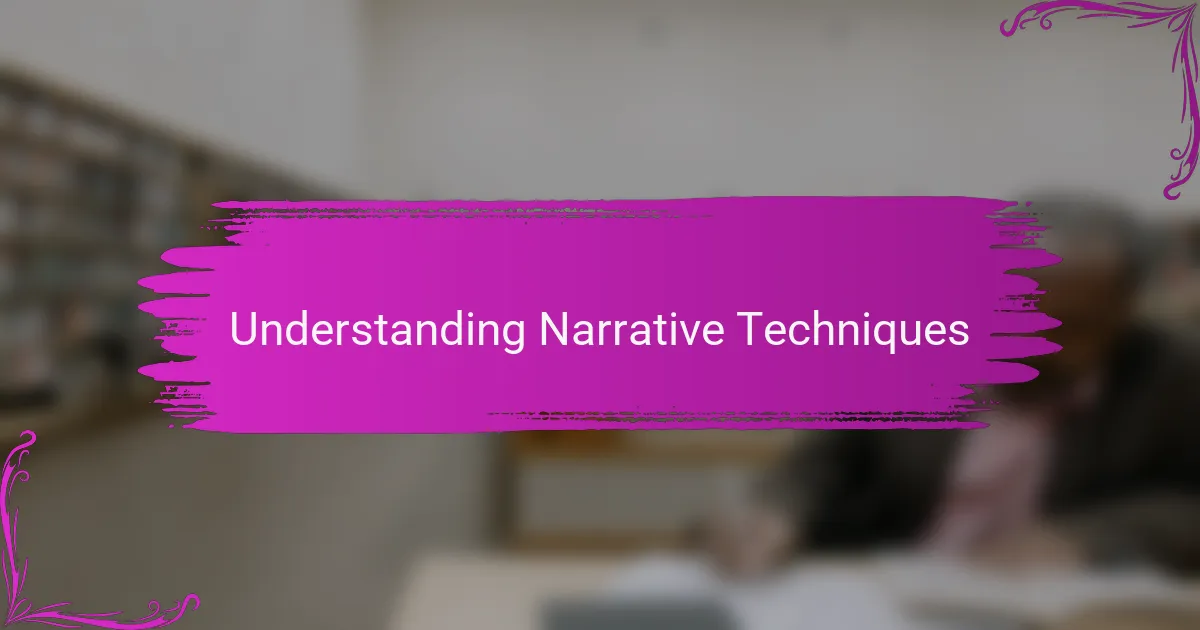
Understanding Narrative Techniques
Understanding narrative techniques involves delving into how authors tell their stories. Virginia Woolf, in particular, uses innovative methods that engage readers on a deeper level. Her stream-of-consciousness technique allows readers to experience characters’ thoughts and emotions in real-time, creating a rich tapestry of inner lives.
As I read Woolf’s works, I often found myself lost in the rhythm of her prose. The way she blends time and perspective feels almost like a dance, leading me to reflect on my own experiences and emotions. It’s fascinating how her narrative style not only tells a story but also invites readers to explore their own consciousness.
When comparing Woolf’s techniques with traditional narrative forms, the differences become even clearer. Let’s break it down:
| Traditional Narrative Techniques | Virginia Woolf’s Techniques |
|---|---|
| Linear Structure | Stream of Consciousness |
| Third-Person or First-Person Narration | Multiple Perspectives |
| Descriptive Action | Exploration of Inner Thoughts |
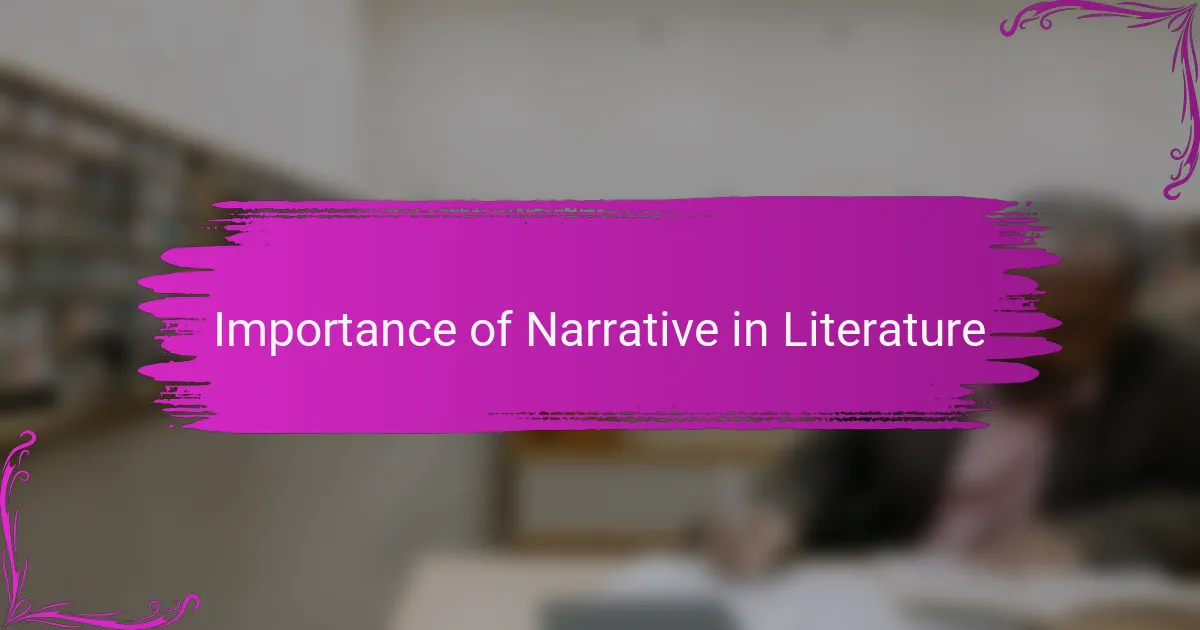
Importance of Narrative in Literature
Narrative serves as the backbone of literature, allowing authors to weave complex stories that resonate with readers. When I think about my own reading experiences, it’s the narratives that stick with me, shaping my understanding of life and human relationships. Without these carefully crafted narratives, literature would lack depth and the ability to connect emotionally with an audience.
The power of a narrative lies in its ability to transport us into different worlds and perspectives. I remember being profoundly affected by Woolf’s “Mrs. Dalloway,” where the events of a single day reflect the broader tapestry of life’s complexities. How often do we ponder our personal narratives? By engaging with literature, we become part of a universal dialogue, feeling seen and understood through the experiences of fictional characters.
Ultimately, narrative form can significantly shape a reader’s emotional journey. Reflecting on my favorite novels, I realize that it’s not just about the plot; it’s how the story unfolds that truly captivates me. By carefully choosing narrative techniques, authors like Woolf unlock new dimensions in storytelling, prompting us to question our own realities and experiences.
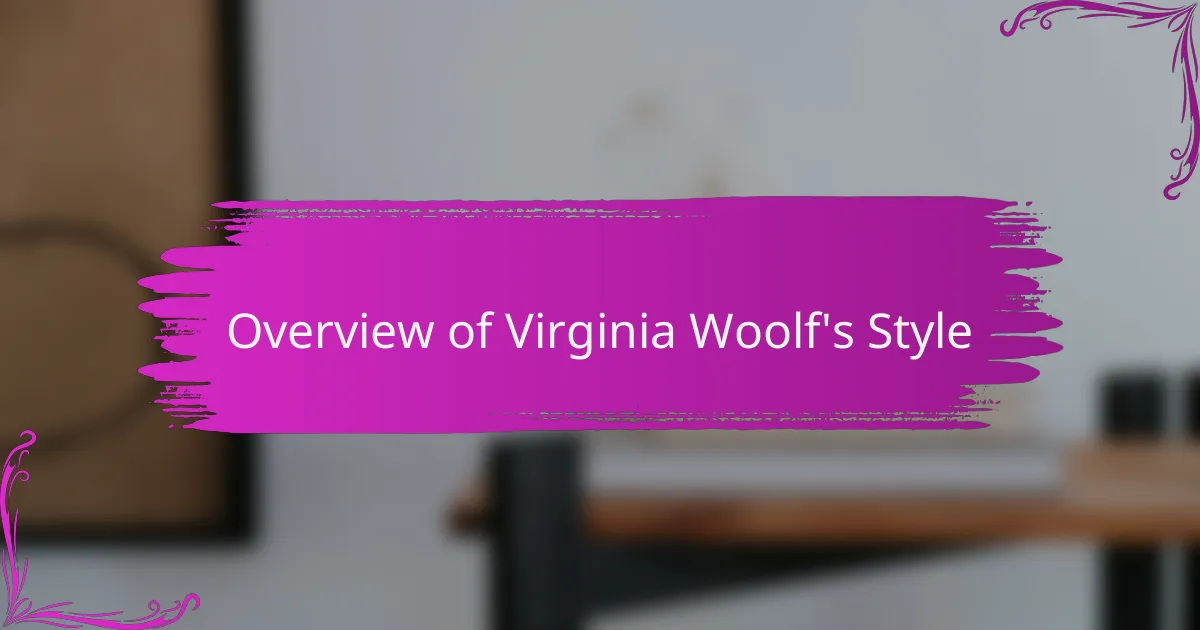
Overview of Virginia Woolf’s Style
Virginia Woolf’s style is distinctive, characterized by her stream-of-consciousness technique and a deep exploration of characters’ inner thoughts. When I first delved into her works, it felt like stepping into the minds of her characters, where time and structure melted away, allowing emotions and observations to flow freely. This immersive experience stirred a sense of intimacy, making me reflect on my perceptions of reality and the human experience itself.
Woolf’s prose is not just about the narrative but also about the rhythm and cadences of language. I remember being captivated by how she paints vivid images with just a few carefully chosen words, making every sentence resonate with meaning. Her ability to weave intricate details into the fabric of everyday life is something I strive to appreciate and understand more with each reading.
- Use of stream-of-consciousness to depict characters’ thoughts
- Fluid narrative style that often defies traditional structure
- Emphasis on emotional depth and psychological complexity
- Vivid imagery that creates emotional resonance
- Exploration of themes like time, identity, and societal constraints
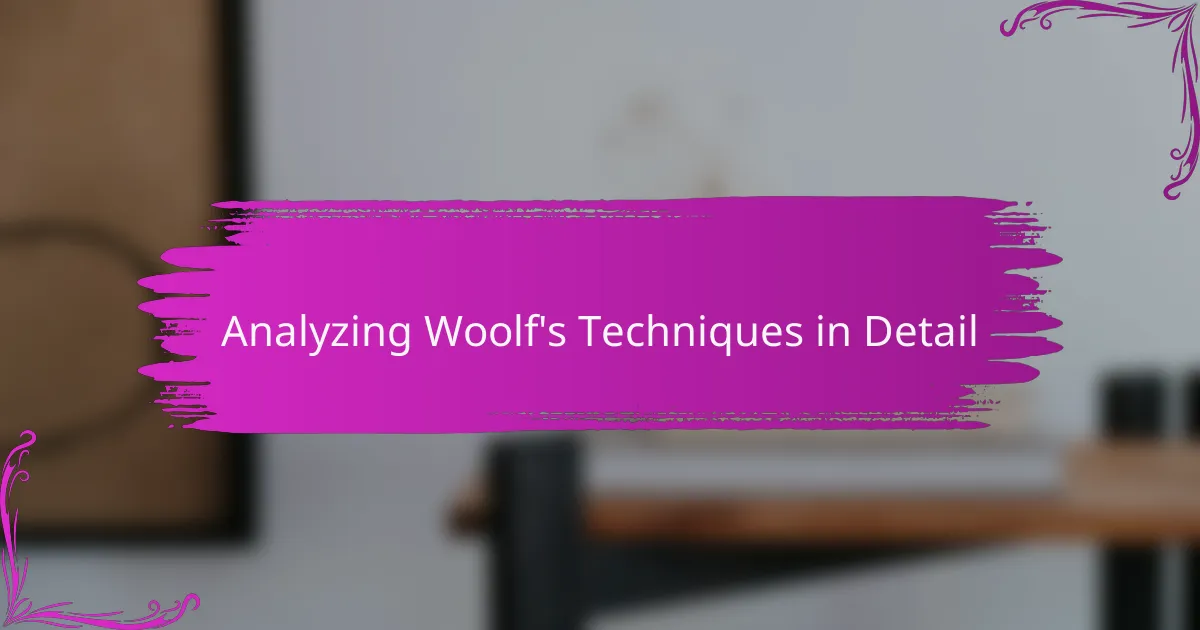
Analyzing Woolf’s Techniques in Detail
Virginia Woolf’s narrative techniques are truly fascinating, and they often leave a lasting impression on me as a reader. Her use of stream of consciousness, for instance, immerses us deeply into the characters’ thoughts, creating a rich, emotional tapestry that feels incredibly intimate. I remember reading “Mrs. Dalloway” and being struck by how her non-linear storytelling made me reflect on life’s fleeting moments—the way thoughts intermingle, much like the patterns of our own minds.
When I delve into Woolf’s work, I’m particularly drawn to her innovative use of time. She often blurs the lines between past and present, which mirrors how memory functions in real life. This technique not only enhances character development but also evokes profound feelings of nostalgia and introspection in the reader.
Here are some key aspects of Woolf’s narrative techniques:
- Stream of Consciousness: Presents characters’ thoughts in a flowing, freeform manner.
- Non-Linear Storytelling: Moves back and forth in time, mimicking human memory.
- Symbolism: Uses objects and settings to convey deeper meanings and themes.
- Interior Monologue: Provides insight into characters’ inner lives, revealing their emotions and motivations.
- Imagery: Crafts vivid scenes that engage the reader’s senses, making experiences feel tangible.
These techniques are not just stylistic choices; they are windows into the human psyche that resonate on emotional levels, inviting readers to connect with the characters in profound ways.
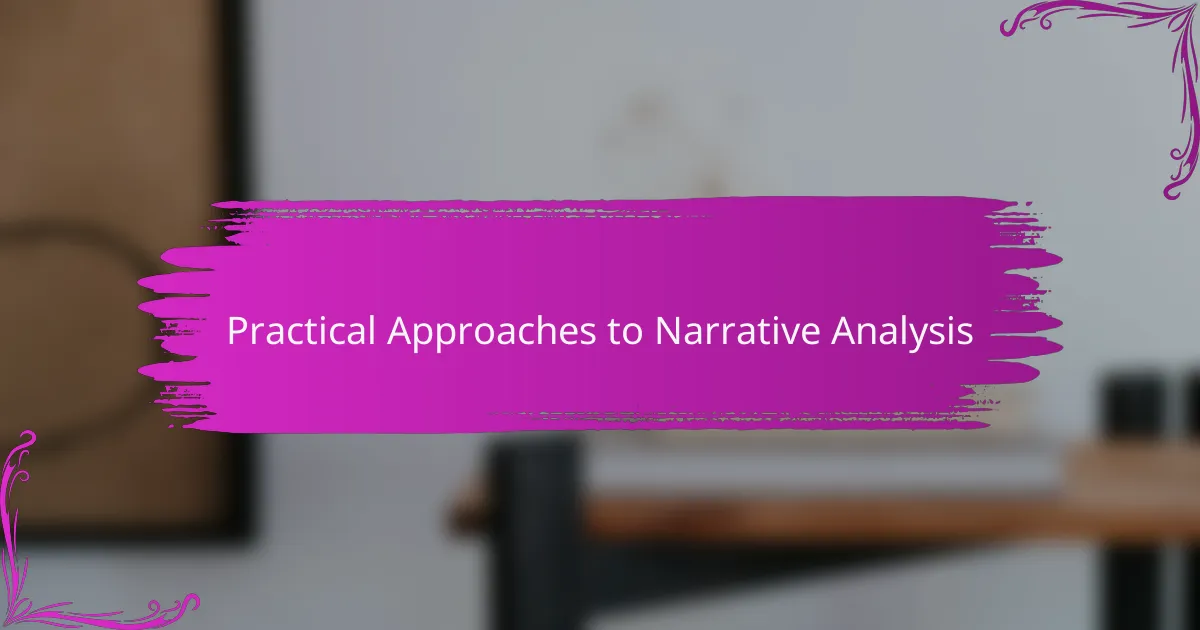
Practical Approaches to Narrative Analysis
When diving into Virginia Woolf’s narrative techniques, I found that a practical approach is essential. One method I applied was close reading, which allowed me to appreciate her use of stream of consciousness. This technique invites readers into the characters’ minds, creating an intimate experience that often left me reflecting on my own thoughts and emotions.
Another strategy involves examining the structure of her narratives. Woolf plays with time and perspective in a way that feels almost fluid. For instance, in “To the Lighthouse,” the shifting viewpoints transform a simple family trip into a complex exploration of existence, which made my own perspective on time and memory shift dramatically.
Here are some practical approaches I recommend for analyzing narrative techniques:
- Close Reading: Focus deeply on specific passages to understand the language and its impact.
- Character Mapping: Create diagrams that outline the relationships and perspectives of characters.
- Thematic Exploration: Identify recurring themes and their development throughout the work.
- Temporal Analysis: Examine how time is represented and manipulated in the narrative.
- Comparative Analysis: Contrast Woolf’s techniques with those of contemporaries for deeper insights.
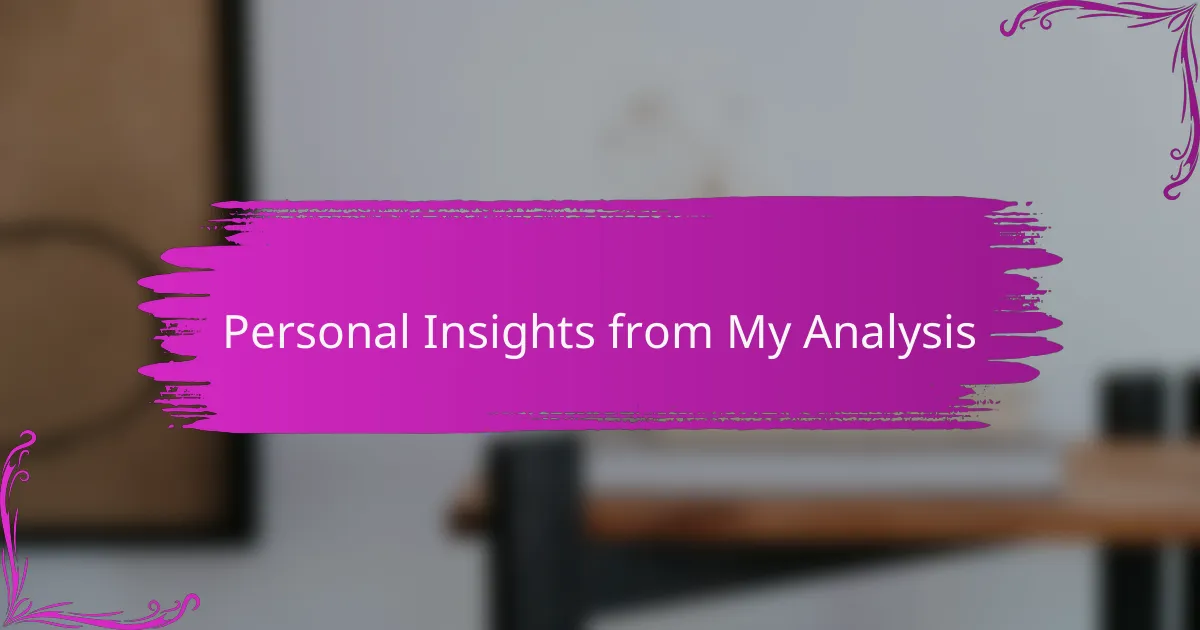
Personal Insights from My Analysis
As I navigated the depths of Woolf’s narrative techniques, I discovered that each reading seemed to reveal new layers of meaning. For instance, I can vividly recall the first time I read “Mrs. Dalloway” and found myself pondering the nature of time. How often do we consider the impact of a single day in shaping our identities? Woolf’s non-linear approach forced me to reevaluate my own perceptions, making me wonder about the connections between fleeting moments and the broader tapestry of our lives.
One striking aspect of Woolf’s style is her ability to evoke raw emotions through seemingly ordinary scenes. I remember feeling a surge of empathy during the moments when her characters grapple with their innermost thoughts. The way she intertwines their experiences with the fabric of daily life struck a chord with me, showcasing how profound moments can emerge from the mundane. It’s a reminder that our own lives are often colored by similar shades of complexity.
Through my analysis, I’ve also come to appreciate how Woolf compels readers to engage actively with the text. Her shifting perspectives challenge us to consider multiple viewpoints and the fluidity of human experience. Do we not often filter our own narratives through the eyes of others? In this way, Woolf encourages us to reflect on our connections with those around us, deepening our understanding of ourselves and the world we inhabit.
